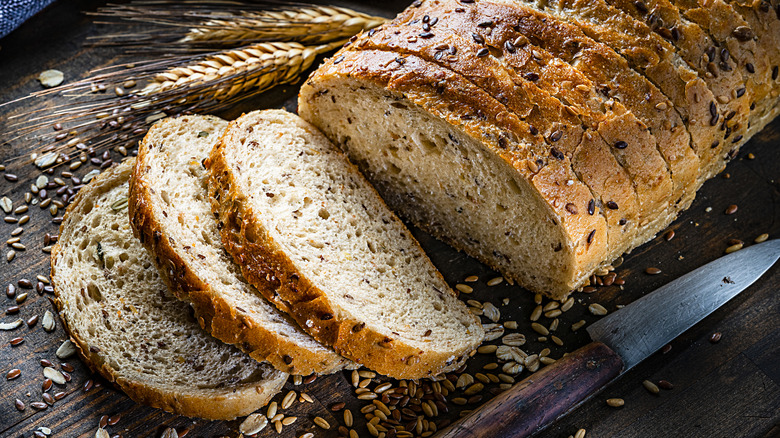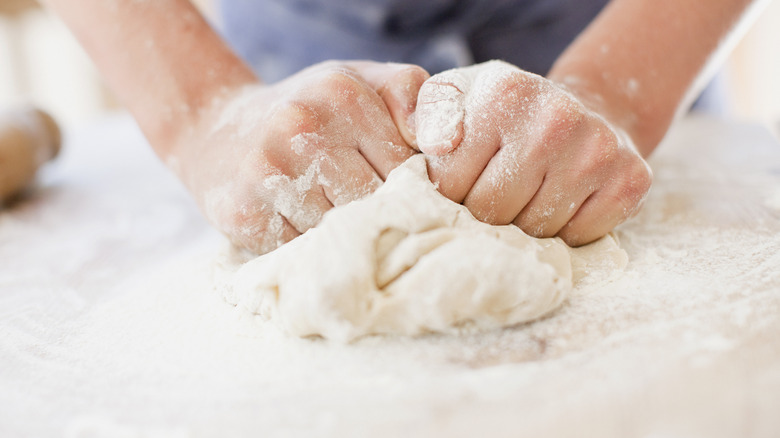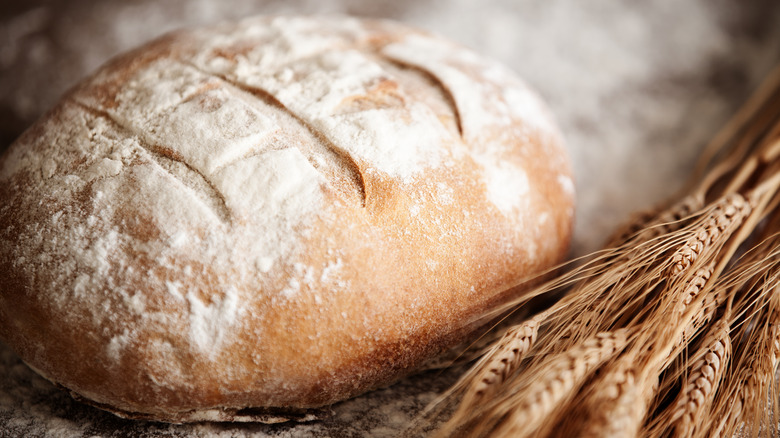The Flour Mistake That Makes Homemade Bread Fall Apart
Making homemade bread intimidates even the most experienced home cooks. When made correctly, a freshly baked loaf blows any store-bought brand out of the water. However, there are myriad opportunities in which one mistake can turn bread into a dry, crumbly mess. If you're having trouble figuring out what could be ruining your batch, take a closer look at the amount of flour you're adding to your mix. Adding too much could be causing the problem.
Because flour easily soaks up moisture, getting the right amount becomes crucial if you do not want to dehydrate your dough. Too little flour will leave you with a gooey mess while too much creates a hard batter that will not fluff up properly. Try to stay as exact and accurate as possible when measuring ingredients as this will maximize the chances your loaves will bake properly. Remember to slice your bread with a double-serrated knife as well as its toothed blade will maximize your chances of getting that neatly cut slice you worked hard for.
Don't use unnecessary amounts of flour during kneading
If you're properly measuring your bread ingredients but are still finding your loaves crumbly, you could also be kneading your dough with too much flour. Beginner bakers are particularly prone to this mistake as kneading requires you to strike a sensitive balance between sticky and smooth. Rubbing on excess flour as you knead can result in unwanted raw flour mixing into your batter. Excess flour will increase the chances of your bread coming out crumbly.
To avoid incorporating too much flour back into your bread mix, make sure to only sprinkle small amounts as you work your way through the dough. This should be enough to keep your hands from sticking to your batter. After a while, you should feel your fingers attaching to the dough. At this point, you should distribute more flour on its surface but make sure to use less flour each time. You'll generally need smaller increments of flour the farther you go along in the kneading process.
Use gluten-rich flours to avoid crumbly bread
There are myriads of flours available for sale, including all-purpose, cake, and self-rising variants. While you might be enticed to just buy one type and use it for all types of recipes, using the wrong flour during baking can create nasty results. The same applies to bread. You'll want to stick to high-gluten variants especially meant for bread. Bread flours yield the best results as all-purpose flour holds smaller amounts of gluten in its particles. You'll also want to gravitate towards white flour because whole wheat flour tends to crumble more easily.
If you don't have the right flour for making bread, you can also try incorporating small amounts of wheat gluten into whatever you have on hand. This should make up for the lack of gluten found in your dough but keep in mind that you should also be careful when integrating it into a mix. When you're done, store your loaves in an old-fashioned bread box to maximize their shelf life.



